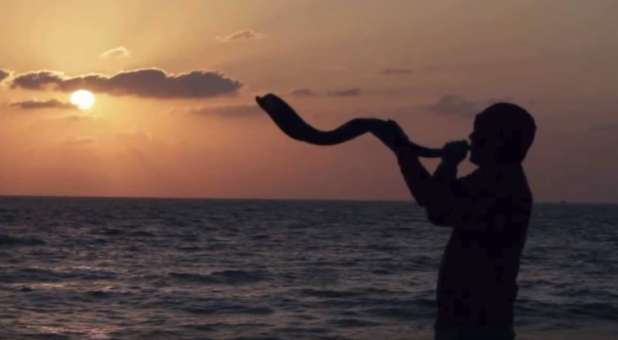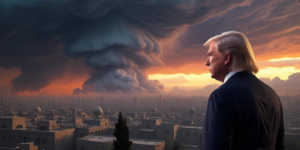4 Keys to Unlock the Mystery of the 7th Shofar and the Rapture
Those who believe that the rapture of the saints and the resurrection of the righteous in Yeshua comes at the end of the tribulation (Post Tribulation), present two views of where to place the rapture. One view, which I think is the more dominant, is that it comes at the seventh shofar in Revelation 11. The other view is that it comes at the end of the season of the bowls of wrath (a brief season at the end of the tribulation), and is identified with the blowing of the shofar at the end of Yom Kippur. This identification is connected to the 1 Corinthians 15:51-52 text that says we will be transformed at the last shofar.
In my book Passover, Key to the Book of Revelation, I argue for the seventh shofar as the shofar of the rapture, our being caught up with the Lord that leads to our return with Him. I see a process of events in his return and do not see it as an all-at-once event. I do understand that in such matters, we see through a glass dimly, and that all such views are somewhat speculative.
My reasons for holding to this view:
1. The Last Shofar in 1 Corinthians 15 could refer just to the last of the shofars that bring judgment, and this seventh is the last one in the series and announces the final judgment, rapture and resurrection. It is not the last to ever be blown. There will be many more blown throughout the Millennial Age.
2. The Feast of Yom Teruah, or the Feast of the Blasting of the Trumpet, has no great fulfillment as do the other feasts, which have obvious fulfillments in Yeshua. But if Yom Teruah announces the coming of the Messiah, and effects the rapture, the resurrection and then his descent to earth, we would have that fitting fulfillment. Other attempts do not identify a great fulfillment sufficient for the weightiness of a major feast. The association of 2 Thessalonians 4:16-17 with Yom Teruah or Rosh Hoshana is a dominant view and commonly taught for good reason.
3. The Book of Revelation provides a chronology that is progressive in the seven seals, the seven shofarot and the seven bowls of wrath. The seventh seal opens up and includes the seven trumpets. The seventh trumpet opens up and includes the seven bowls of God’s wrath. The book also includes parentheses narratives in the midst of this progression that are not necessarily in the progression. It is significant that John puts his parentheses narratives where he does.
Before the seventh shofar, John writes that the mystery of God has been completed when he is about to sound the seventh shofar (Rev. 10:7). If this is the shofar of the rapture and resurrection, it would be a perfect fit. The mystery is the completion of the numbers counted in the bride of the Messiah, as Paul teaches in Ephesians 3, and is the fullness of the Gentiles in Romans 11. If the rapture and resurrection are after the seventh shofar, then the mystery would not be complete before it is blown, as Revelation 10:7 states. There would still be people being saved who can be part of the rapture after the blowing of the seventh shofar. This does not fit the text in Revelation 10:7.
4. Revelation 11:3 states that at the end of 1,260 days (the time of the Great Tribulation) the two prophetic witnesses who are martyred are raised from the dead and ascend to heaven. This is certainly a picture of the rapture and resurrection that I believe shortly follows. Then there is a great earthquake, and 7,000 die in the city called Sodom, which is identified as Jerusalem by noting that it is the city where our Lord was crucified. It then indicates that Jerusalem turns to the Lord. “The rest were terrified and gave glory to the God of heaven” (Rev. 11:14b, ESV).
In every other case when judgments falls in the book of Revelation, the people do not turn to God but rebel and curse all the more since they are under the deception of the Antichrist and the false prophet. This fits as the time when Israel/Jerusalem calls on Yeshua to save them (Matt. 23:39 and following).
This fits Zechariah 14 where the nations have surrounded Jerusalem. There is the earthquake, and then the Lord goes forth to fight against the armies of those nations. The turning of Jerusalem to Yeshua fits if it occurs between Zechariah 2 – 3, and then his feet touch down on the Mount of Olives. The saints return with Yeshua, and the war is still ongoing, but not yet the end of the war. It is not yet the born-again experience for Israel, but seems it is a corporate turning of Jerusalem to Yeshua. Only after this turning in Revelation 11:14 do we read that the angel sounds the seventh shofar.
I believe that when Israel or Jerusalem call upon Yeshua, it leads to the rapture, then the kingdoms of this world have become the kingdom of our Lord and of his Anointed One (Rev. 11:15). {eoa}
Dan Juster is the director of Tikkun Ministries International, a Messianic Jewish ministry. He is an author and has been in Messianic Jewish ministry since 1972.
This article originally appeared at reviveisrael.org.




























































